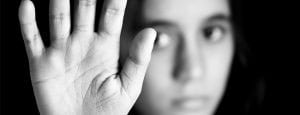Acknowledgment: This story is sponsored by Takeda and is promoted through the Patient Worthy Collaborative Content program. We only publish content that embodies our mission of providing relevant, vetted and valuable information to the rare disease community.
Narcolepsy is a neurological disorder that affects sleep. Patients with narcolepsy have a decreased ability to regulate their cycles of sleeping and wakefulness. The exact cause of narcolepsy is not known. There are a number of risk factors for the condition such as family history, exposure to pesticides, or prior brain injuries like strokes or tumors. The most well-known symptom of narcolepsy is excessive sleepiness during the day, often to the extent that a patient may fall asleep suddenly during their regular activities. This can occur even after a full night of sleep as patients are unable to sleep as deeply as people who do not have narcolepsy. Other symptoms include cataplexy, hallucinations, sleep paralysis, insomnia, and unexpected weight gain. There is no cure for narcolepsy.
Treating Narcolepsy
There are interventions available for patients living with narcolepsy that may allow for improvement in the patient’s condition. However, the disorder cannot be cured at this time, and many people can not always fully control their symptoms.
Experimental treatments for narcolepsy continue to be researched and evaluated in clinical trials. Continue reading to learn more about a narcolepsy clinical trial.
A doctor will often recommend changes to the patient’s lifestyle as a part of treatment. A common example is for the patient to schedule regular periods during the day for napping. These naps may improve symptoms such as excessive daytime sleepiness and sudden involuntary sleep, but the benefit is short-lived.
Patients are also encouraged to practice strict sleep hygiene. Sleep hygiene recommendations include planning a consistent sleep schedule, creating an optimal sleep environment (ex. quiet, low light, comfortable), avoiding strenuous physical or mental exercise too close to bedtime, avoiding stimulants and psychoactive substances such a nicotine and alcohol before sleep, limiting light exposure before sleep, and using the bed exclusively for sleep and sexual activity.
These strategies are typically employed in combination with some sort of medication, often a central nervous system stimulant. A scientific review of treatments for narcolepsy titled “New developments in the management of narcolepsy,” was published in 2017 in the scientific journal Nature and Science of Sleep. This paper, which can be found here, discusses in detail the medications currently used for narcolepsy. Some examples include:
- Methylphenidate (branded as Ritalin) – Typically taken either orally or applied to the skin, treatment with this stimulant can improve overall alertness, performance, and vigilance. For some patients, this treatment may allow for them to adequately manage their symptoms. This therapy carries potential side effects, such as weight loss, anxiety, appetite loss, heart problems, allergic reactions, and psychosis. The risk of the most serious complications or side effects is generally low when used as directed.
- Modafinil (branded as Provigil) – This orally active medicine may be used effectively as a treatment for excessive daytime sleepiness in some patients with narcolepsy. Modafinil minimizes the potential for dependence or addiction. There is a small potential for side effects, such as allergic reactions, severe skin rashes, Stevens-Johnson syndrome, headache, nausea, appetite loss, psychiatric problems, and diarrhea. Modafinil is not approved for use in children. The most severe side effects, such as Stevens-Johnson syndrome, are rare.
- Probably the most widespread treatment for narcolepsy is sodium oxybate (branded as Xyrem). Unlike the prior options, sodium oxybate was developed with the specific goal of treating some of the most debilitating symptoms of narcolepsy, such as excessive daytime sleepiness and cataplexy (sudden muscle weakness/paralysis). It must be used alongside a risk evaluation and management strategy (REMS) and carries a black box warning.
REMS requires that sodium oxybate be prescribed by a certified provider and be dispensed from a certified, central pharmacy. Users must enroll in a program for the drug and are required to document their usage.
The black box warning for this drug was applied because sodium oxybate is classified as a central nervous system depressant. This means that patients must closely follow dosing instructions due to safety concerns resulting from a heavier-than-prescribed dose. Common side effects include nausea, headache, and dizziness. There is also a small risk of other adverse effects, such as mood changes, numbness, urinary incontinence, and cognitive disturbances. Sodium oxybate must be taken twice per night to maintain its effect throughout. The first dose is taken before going to sleep and the second is taken anywhere from 2.5 to 4 hours later.
It has been well established with rigorous scientific research that sodium oxybate is an effective therapy for narcolepsy. This success has led to the drug becoming a first-line treatment. The US Food and Drug Administration (FDA) approved this drug for narcolepsy in 2002.
Investigating Additional Approaches
While there undoubtedly are some effective treatments available for narcolepsy, there are still patients who may not be able to fully control their symptoms despite receiving the most advanced available treatment.
Takeda Pharmaceuticals has been making it one of their priorities to develop a treatment for narcolepsy that can help more people living with the disease manage their symptoms.
If you are living with narcolepsy, perhaps you would like to consider participating in a clinical trial with an investigational drug and join the SPARKLE 1501 clinical trial. The goal of this trial is to evaluate the investigational drug’s tolerability and safety, as well as its effect on disease symptoms. Qualifying participants will receive travel support and may also be compensated for their time.

You may be eligible for participation in this trial if you:
- Are 18–65 years old
- Are diagnosed with narcolepsy with or without cataplexy (also known as narcolepsy type 1 or narcolepsy type 2)
- For patients with narcolepsy with cataplexy, experience 4 or more episodes of cataplexy/week when not taking medication
- Meet other requirements as determined by a screening process







